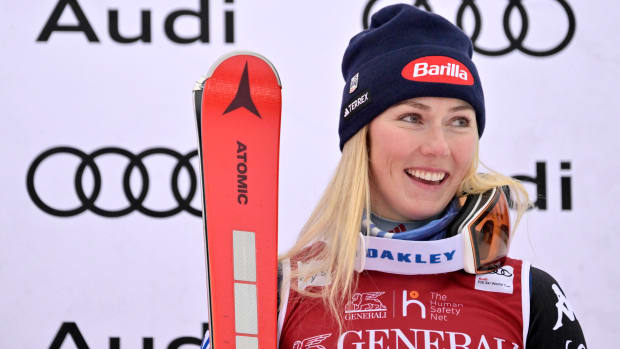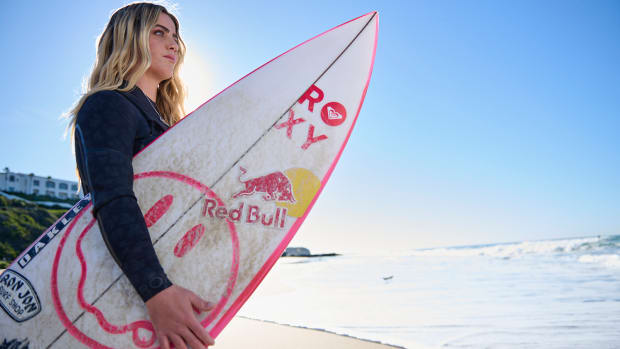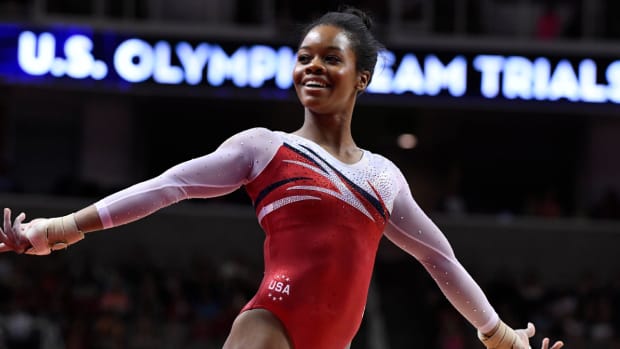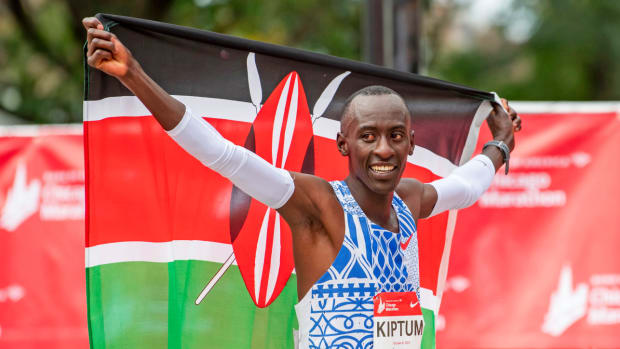Megan Youngren to Become First Openly Transgender Athlete to Compete at the U.S. Olympic Marathon Trials
On Dec. 8, 2019, 28-year-old Megan Youngren became one of 63 women at the California International Marathon to officially qualify for the 2020 U.S. Olympic marathon trials, the race that will determine the team for Tokyo. Her 40th-place finish in 2:43:52 came as both a relief and a reward, after four months of intense training. But it also marked another significant moment: With her qualification, Youngren is set to make history on Feb. 29 as the first openly transgender athlete to compete at the U.S. Olympic marathon trials.
“I’m open to talking about it to people because that’s the only way you make progress on stuff like this,” says Youngren, who first started taking hormone medication as a college student in 2011. She came out publicly as transgender in ’12 and finalized paperwork for her transition in ’19.
“To my knowledge, and that of other staff who have been with USATF for many years, we do not recall a trans competitor at our Marathon Trials,” spokesperson Susan Hazzard says. Just last month, Chris Mosier was interviewed by The New York Times as the first transgender athlete to qualify for and participate in an Olympic trials in the gender with which he identifies. Mosier is the first trans man to compete with cisgender men at the 50-kilometer race walk in Santee, Calif. “For me, it’s all about making a pathway for all the trans athletes that come after me,” he told the Times.
In 2013, Youngren started running to lose weight and boost her health after transitioning, and now she primarily races on trails and runs up and down mountains for fun. Youngren says that running helped alleviate any lingering symptoms from a case of shingles. By 2014, she was running consistently, but with little structure to her training. An Alaska native, Youngren ran her first marathon at the 2017 Equinox Marathon in Fairbanks in 4:48, on a course with an unforgiving 3,285 feet of elevation gain and loss. Despite the difficulty and cramping, she credits that race as the one that got her hooked on the 26.2-mile distance.
At the 2019 Los Angeles Marathon, Youngren managed to get her time down to 3:06:42, which propelled her to seek out a sub-three-hour goal for the first time. At the time, she was working at a bakery and her job required a lot of manual labor, but she still managed to fit in runs after work. When the bakery closed in September, it freed up some time in her day to run more, and Youngren’s mileage eventually reached 85 per week, with the majority on trails.
“I thought that if I worked incredibly hard and took some huge risks that I could run a 2:45,” Youngren says. “People will try to put it down by saying, ‘That’s too easy because you’re trans.’ But what about the 500 other women who will qualify? There’s probably someone with the exact same story. I trained hard. I got lucky. I dodged injuries. I raced a lot, and it worked out for me. That’s the story for a lot of other people, too.”
Before the California International Marathon, Youngren’s previous PR was a 2:52:33 set in August at the Anchorage RunFest’s Humpy’s Marathon, where she battled heavy winds and was on qualifying pace through 18 miles.
“I’ve had multiple times this year when I thought I was going to hit that time but then fell apart,” Youngren says. “This time, it was really hard but I made it through. The race itself broke me mentally.”
In the past few years, the organizers of major distance races have reviewed their rules regarding transgender participants. In April 2018, the Boston Marathon updated its policy on transgender runners, stating that athletes can qualify and participate in the marathon as their identified gender, and told NPR that it does not require runners to outline their gender history. The Western States Endurance Run, a historic 100-mile race in California, released a transgender entrant policy stating that female transgender entrants can register to compete as women, provided that they have been undergoing continuous, medically supervised hormone treatment for at least one year before the race. A male transgender entrant can register to compete as a man with no restrictions.
USATF says that it follows the (somewhat controversial) rules set forth by the International Olympic Committee in regards to transgender qualifiers or entrants for the Olympic marathon trials. A transgender female athlete must demonstrate that her testosterone level in serum is below 10 nanomoles per liter for at least 12 months before competition and must remain below that level for the period of desired eligibility to compete as a woman. The IOC has been planning to implement stricter guidelines that could lower the testosterone levels in serum to 5 nanomoles per liter.
Youngren, who has been working with the same doctor since 2013, has levels that are well below either standard, which were last measured at below 2 nmol/L when tested.
“I have done everything by the book, and I can show that,” Youngren says.
When declarations for Olympic marathon trials were due in late January, Youngren was one of two people listed as “not qualified.” Although properly registered for the race, Youngren was still in the process of submitting a therapeutic use exemption for testosterone-blocking medication.
On Jan. 31, USATF’s women’s long distance running chair, Kimberly Keenan-Kirkpatrick, issued an apology to Youngren by email for the delay in her declaration process. “USATF wants to get everything right so there is no room for push back by other athletes, which will make the process easier for you,” wrote Keenan-Kirkpatrick.
After the California International Marathon, Youngren took a short break from training to recover from the race. Under the tutelage of a newly hired coach ahead of the Olympics marathon trials in Atlanta, Youngren has incorporated more structured speed work into her training. Running in December and early January in south central Alaska means completing long runs and track workouts on frigid days, where the temperatures would range from -5°F to -15°F.
“There are days when my feet are sliding around in the snow. My lungs hurt because it’s cold and I’m wearing all these layers. ‘Am I really getting that much faster?’ ” Youngren says. “Then it warms up a bit for a day and I go, ‘Oh, my God. I am actually getting faster. This is working.’ As far as getting on the starting line in Atlanta, I am super excited because training is going so well.”




